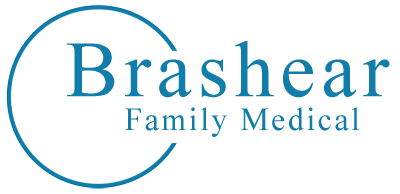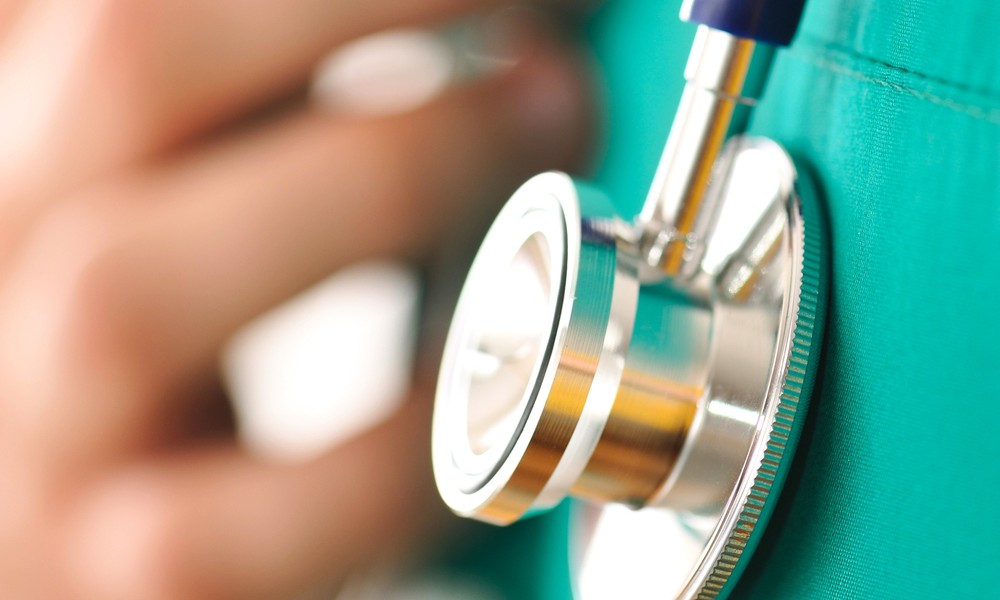Looking for a disease in someone without symptoms is called screening. The goal of screening is to find a disease like cancer in an early, more curable stage, in order to help people live longer, healthier lives.
In the United States, screening the general public for esophageal cancer is not recommended by any professional organization at this time. This is because no screening test has been shown to lower the risk of dying from esophageal cancer in people who are at average risk.
However, people who have a high risk of esophageal cancer, such as those with Barrett’s esophagus, are often followed closely to look for early cancers and pre-cancers.
Testing People at High Risk
Many experts recommend that people with a high risk of esophageal cancer, such as those with Barrett’s esophagus, have upper endoscopy regularly. For this test, the doctor looks at the inside of the esophagus through a flexible lighted tube called an endoscope. The doctor may remove small samples of tissues (biopsies) from the area of Barrett’s so that they can be checked for dysplasia (pre-cancer cells) or cancer cells.
Doctors aren’t certain how often the test should be repeated, but most recommend testing more often if areas of dysplasia are found. This testing is repeated even more often if there is high-grade dysplasia (the cells appear very abnormal).
If the area of Barrett’s is large and/or there is high-grade dysplasia, treatment of the abnormal area might be advised because of the high risk that an adenocarcinoma is either already present (but was not found) or will develop within a few years. Treatment options for high-grade dysplasia might include surgery to remove part of the esophagus with the abnormal area, endoscopic mucosal resection (EMR), photodynamic therapy (PDT), and radiofrequency ablation (RFA). The outlook for these patients is relatively good after treatment.
Careful monitoring and treatment (if needed) may help prevent some esophageal cancers from developing. It may also detect some cancers early, when they are more likely to be treated successfully.
Signs and Symptoms of Esophagus Cancer
Cancers of the esophagus are usually found because of the symptoms they cause. Diagnosis in people without symptoms is rare and usually accidental (because of tests done for other medical problems). Unfortunately, most esophageal cancers do not cause symptoms until they have reached an advanced stage, when they are harder to treat.
Trouble Swallowing
The most common symptom of esophageal cancer is a problem swallowing, with a feeling like food is stuck in the throat or chest, or even choking on food. The medical term for trouble swallowing is dysphagia. This is often mild when it starts, and then gets worse over time as the opening inside the esophagus gets narrower.
When swallowing becomes harder, people often change their diet and eating habits without realizing it. They take smaller bites and chew their food more carefully and slowly. As the cancer grows larger, the problem can get worse. People then may start eating softer foods that can pass through the esophagus more easily. They may avoid bread and meat, since these foods typically get stuck. The swallowing problem may even get bad enough that some people stop eating solid food completely and switch to a liquid diet. If the cancer keeps growing, at some point even liquids might be hard to swallow.
To help pass food through the esophagus, the body makes more saliva. This causes some people to complain of bringing up lots of thick mucus or saliva.
Chest Pain
Sometimes, people complain of pain or discomfort in the middle part of their chest. Some people describe a feeling of pressure or burning in the chest. These symptoms are more often caused by problems other than cancer, such as heartburn, so they are rarely seen as a signal that a person might have cancer.
Swallowing may become painful if the cancer is large enough to limit the passage of food through the esophagus. Pain may be felt a few seconds after swallowing, as food or liquid reaches the tumor and has trouble getting past it.
Weight Loss
About half of people with esophageal cancer lose weight (without trying to). This happens because their swallowing problems keep them from eating enough to maintain their weight. Other factors included a decreased appetite and an increase in metabolism from the cancer.
Other Symptoms
Other possible symptoms of cancer of the esophagus can include:
- Hoarseness
- Chronic cough
- Vomiting
- Hiccups
- Pneumonia
- Bone Pain
- Bleeding into the esophagus. This blood then passes through the digestive tract, which may turn stools black. Over time, this blood loss can lead to anemia (low red blood cell levels), which can make a person feel tired.
Having one or more of the symptoms above does not mean you have esophageal cancer. In fact, many of these symptoms are more likely to be caused by other conditions. Still, if you have any of these symptoms, especially trouble swallowing, it’s important to have them checked by a doctor so that the cause can be found and treated, if needed.
Endoscopic Treatments for Cancer of the Esophagus
Several types of treatment for esophageal cancer can be done by passing an endoscope (a long, flexible tube) down the throat and into the esophagus. Some of these treatments may be used to try to cure very early stage cancers, or even to prevent them from developing by treating Barrett’s esophagus or dysplasia. Other treatments are used mainly to help relieve symptoms from more advanced esophageal cancers that can’t be removed.
Endoscopic Mucosal Resection
Endoscopic mucosal resection (EMR) is a technique where a piece of the inner lining of the esophagus is removed with instruments passed down the endoscope. EMR can be used for dysplasia (pre-cancer) and some small, very early-stage cancers of the esophagus.
After the abnormal tissue is removed, patients take drugs called proton pump inhibitors to suppress acid production in the stomach. This can help keep the disease from returning.
The most common side effect of EMR is bleeding in the esophagus, which is usually not serious. Less common but more serious side effects can include esophageal strictures (areas of narrowing) that might need to be treated by with dilation, and puncture (perforation) of the wall of the esophagus.
Photodynamic Therapy
Photodynamic therapy (PDT) is a method that can be used to treat Barrett’s esophagus, esophageal pre-cancers (dysplasia), and some very early stage esophageal cancers.
PDT is also often used to treat large cancers that are blocking the esophagus. In this situation, PDT is not meant to destroy all of the cancer, but to kill enough of the cancer to improve the person’s ability to swallow.
For this technique, a light-activated drug called porfimer sodium (Photofrin®) is injected into a vein. Over the next couple of days, the drug is more likely to collect in cancer cells than in normal cells. A special type of laser light is then focused on the cancer through an endoscope. This light changes the drug into a new chemical that can kill the cancer cells. The dead cells may then be removed a few days later during an upper endoscopy. This process can be repeated if needed.
The advantage of PDT is that it can kill cancer cells with very little harm to normal cells. But because the chemical must be activated by light, it can only kill cancer cells near the inner surface of the esophagus — those that can be reached by the light. This light cannot reach cancers that have spread deeper into the esophagus or to other organs.
PDT can cause swelling in the esophagus for a few days, which may lead to some problems swallowing. Strictures (areas of extreme narrowing) can also occur in some patients. These often need to be treated by with dilation. Other possible side effects include bleeding or holes in the esophagus.
Some of this drug also collects in normal cells in the body, such as skin and eye cells. This can make you very sensitive to sunlight or strong indoor lights. Too much exposure can cause serious skin reactions, which is why doctors recommend staying out of any strong light for 4 to 6 weeks after the injection.
This treatment can cure some very early esophageal cancers that have not spread to deeper tissues. But this procedure destroys the tissue, so it can be hard to be certain that the cancer hasn’t spread into deeper layers of the esophagus. Since the light used in (PDT) can only reach those cancer cells near the surface of the esophagus, cells of deeper cancers could be left behind, and grow into a new tumor. People getting this treatment need to have follow-up endoscopies to make sure the cancer hasn’t grown back. They also need to stay on a drug called proton pump inhibitor to stop stomach acid production.
Radiofrequency Ablation (RFA)
This procedure can be used to treat dysplasia in areas of Barrett’s esophagus. It may lower the chance of cancer developing in that area.
A balloon containing many small electrodes is passed into an area of Barrett’s esophagus through an endoscope. The balloon is then inflated so that the electrodes are in contact with the inner lining of the esophagus. Then an electrical current is passed through it, which kills the cells in the lining by heating them.
Over time, normal cells will grow in to replace the Barrett’s cells. The patient needs to stay on drugs to block stomach acid production after the procedure. Endoscopy (with biopsies) then is done periodically to watch for any further changes in the lining of the esophagus. Rarely, RFA can cause strictures (narrowing) or bleeding in the esophagus.
Laser Ablation
This technique can be used to help open up the esophagus when it is blocked by an advanced cancer. This can help improve problems swallowing.
A laser beam is aimed at the cancer through the tip of an endoscope to destroy the cancerous tissue. The laser is called a neodymium: yttrium-aluminum-garnet (Nd: YAG) laser. Laser endoscopy can be helpful, but the cancer often grows back, so the procedure may need to repeated every month or two.
Argon Plasma Coagulation
This technique is similar to laser ablation, but it uses argon gas and a high-voltage spark delivered through the tip of an endoscope. The spark causes the gas to reach very high temperatures, which can then be aimed at the tumor. This approach is used to help unblock the esophagus when the patient has trouble swallowing.
Electrocoagulation (electrofulguration)
For this treatment, a probe is passed down into the esophagus through an endoscope to burn the tumor off with the electric current. In some cases, this treatment can help relieve esophageal blockage.
Esophageal Stent
A stent is a device that, once in place, self-expands (opens up) to become a tube that helps hold the esophagus open. Stents are made of mesh material. Most often stents are made out of metal, but they can also be made out of plastic. Using endoscopy, a stent can be placed into the esophagus across the length of the tumor.
The success of the stent depends on the type of stent that is used and where it is placed. Stents will relieve trouble swallowing in most patients. They are often used after other endoscopic treatments to help keep the esophagus open.
Source: http://www.cancer.org/

